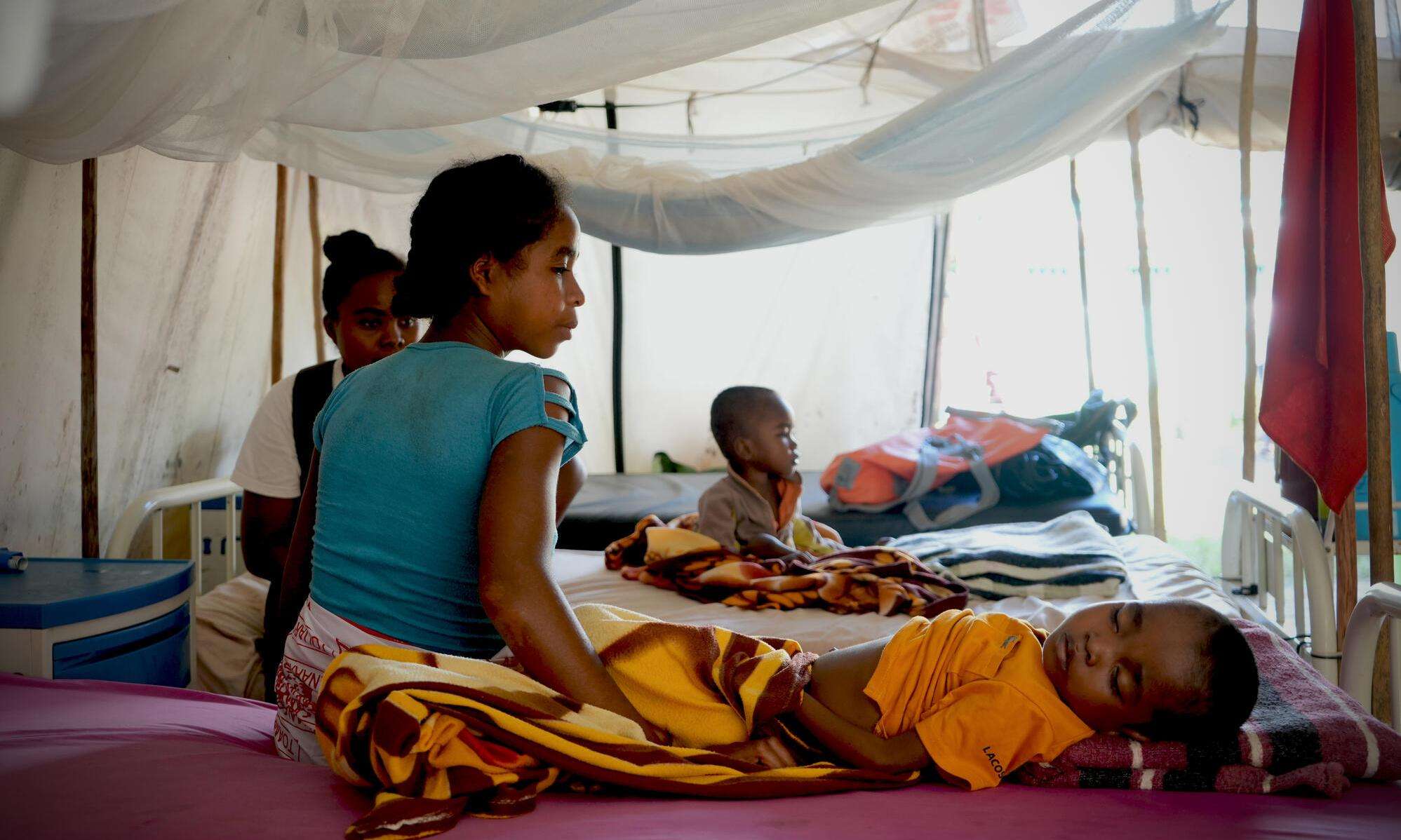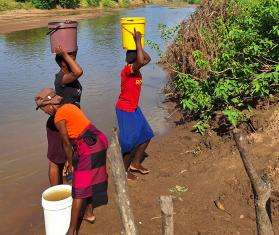The island nation of Madagascar is one of the countries most impacted by the climate emergency, and we are already seeing the consequences for people’s health. Last year, malaria cases exceeded the country’s national epidemic threshold, with more than 2.8 million cases and 400 deaths reported by the Ministry of Health—a significant increase from the 1.7 million cases recorded in 2022.
In Ikongo district, where Doctors Without Borders/Médecins Sans Frontières (MSF) is providing health and nutritional care, people are struggling with not only malaria but also malnutrition. This dual crisis has been worsened by climate-related weather events and Madagascar’s geographic isolation as an island. Children under five are particularly at risk: According to USAID, malaria affects around 7.5 percent of children under five in the country.
What is malaria?
- Malaria is the world’s most deadly parasite, even though it is preventable and treatable.
- It spreads through the bite of infected female Anopheles mosquitoes, which breed during the rainy season, causing cases to increase.
- The majority of cases are in Africa, where 95 percent of malaria deaths occur, and 78 percent of these deaths are children under five years old.
- Prevention measures include sleeping under treated mosquito nets and spraying inside homes with safe, long-lasting insecticides.
Learn more about malaria
Unusable roads cut off health care access
The peak of malaria season coincides with the cyclone and rainy season, which runs from October to May. During this period, the weather makes it extremely difficult for people to access health care, putting the lives of sick children at even greater risk.
"When the rain is heavy, providing care for children becomes difficult,” said Dr. Nantenaina, a doctor at the intensive therapeutic feeding center run by MSF. “The roads become muddy, flooded, and unusable. It is a struggle for both health workers and patients to move around, making it hard for patients to access health centers or for us to send them back home."
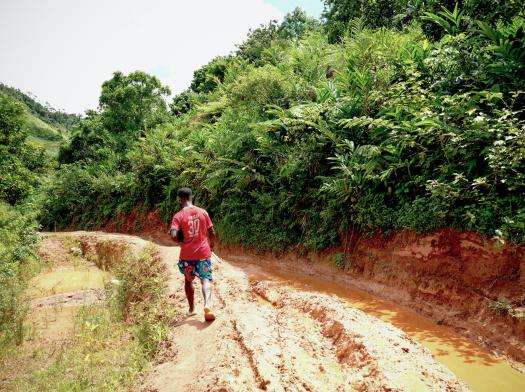
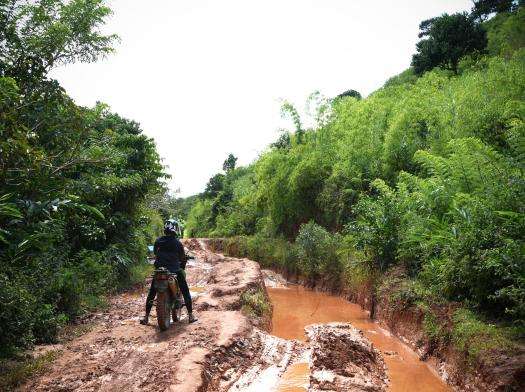
Given the poor road infrastructure, extreme weather conditions severely limit people’s access to health centers and make it difficult for our teams to reach communities. Madagascar 2024 © Coralie Mulliez/MSF
In hard-to-reach areas like Ikongo, the distance between households and health care facilities is significant, and there is a lack of transportation. "After seeing my son's condition deteriorate, I decided to go to the nearest health center,” said Soanary, the mother of a 4-year-old boy suffering from malnutrition and malaria. “To get here, I had to walk for four hours and cross through water, carrying my son on my back.” Soanary isn't the only one facing this situation. As a result, people only seek medical care when their health has deteriorated to a critical condition.
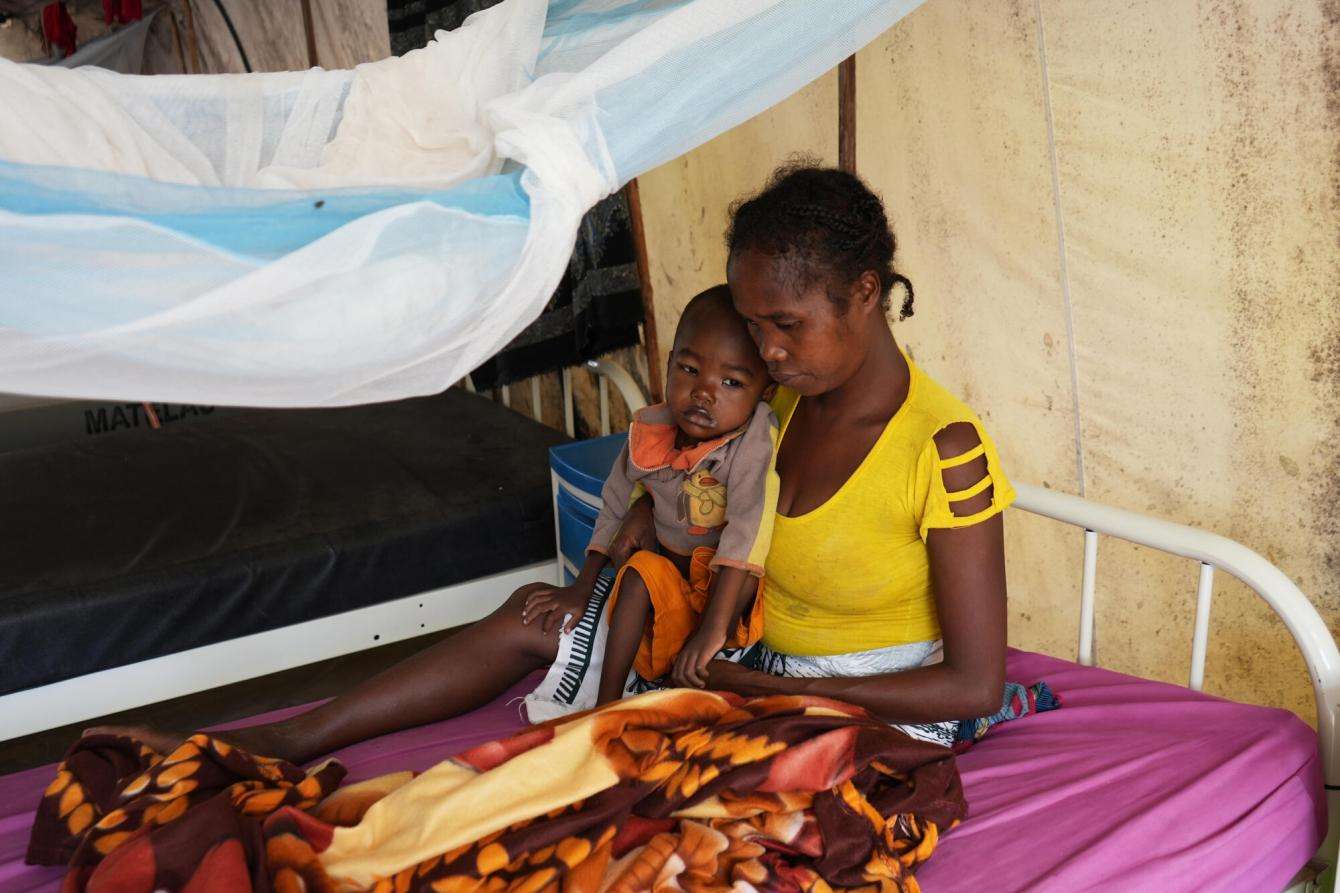
Climate change is at the heart of the crisis
Madagascar has been severely affected by extreme weather events that challenge access to health facilities and threaten the overall state of health and nutrition. This situation has played a significant role in the rise of malaria and malnutrition.
According to the World Health Organization, the rates of malaria cases and deaths from malaria increased by 25 to 55 percent between 2015 and 2022. The 2023 World Malaria Report highlights that these rates surged by more than 100 percent between 2000 and 2022.
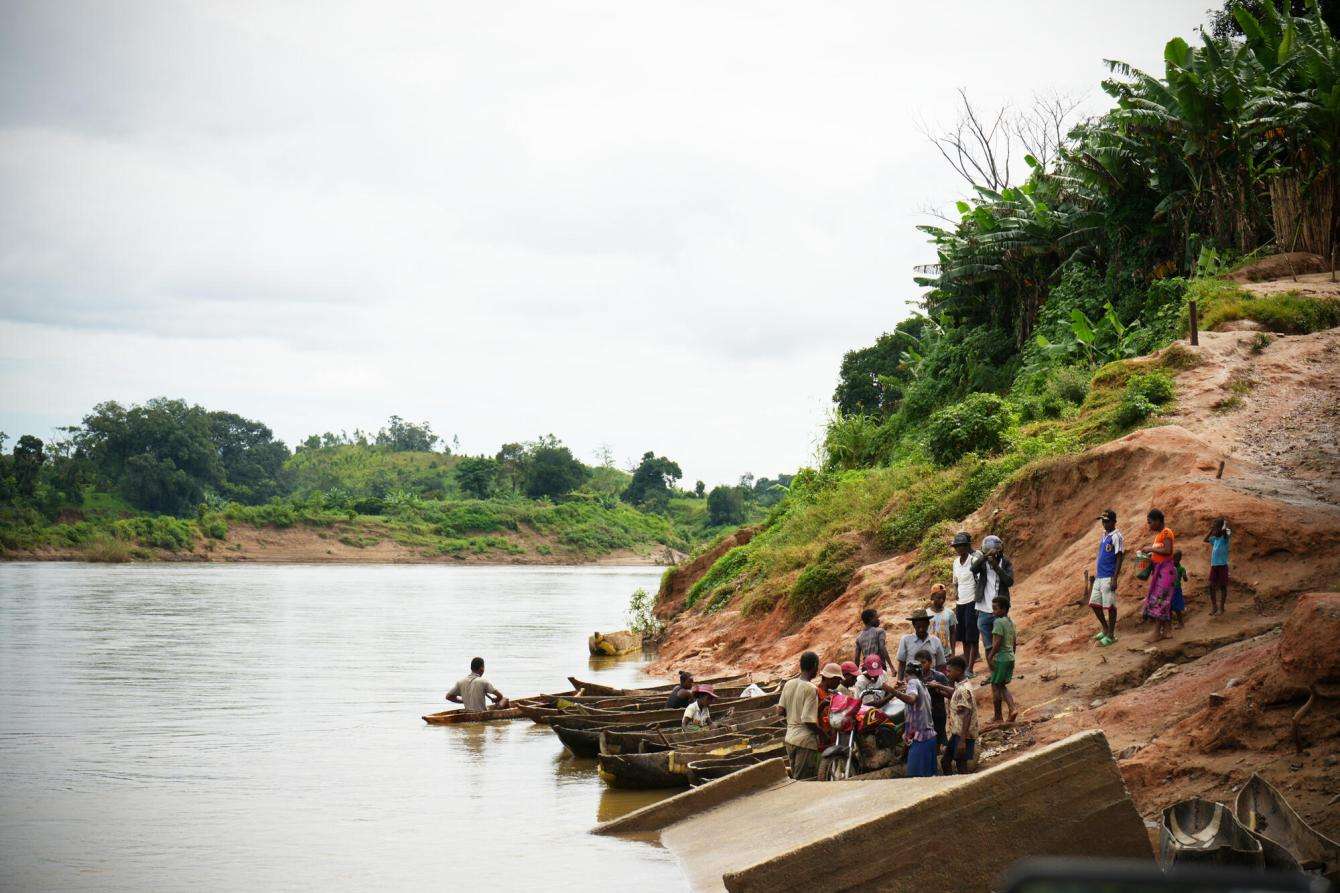
Changes in temperature and rainfall have resulted in floods and significant heat waves that impact the behavior and survival of anopheles mosquitoes which spread malaria, leading to increased disease transmission within communities. In Ikongo district, which already experiences a humid tropical climate, the effects of climate change are particularly severe: Many villages in Ikongo are surrounded by marshes and rivers, and heavy rains cause the flooding of plantations and rice fields, worsening the already precarious nutritional conditions in the area. "During the rainy season, our health centers receive a lot of malaria cases," explained Evelyne, a nurse at the Ikongo primary health center.
Often, children with malaria also have malnutrition. "We have at least one new case of a malnourished child who also suffers from severe malaria every week during the rainy season," said Dr. Nantenaina, a doctor at the intensive therapeutic feeding center operated by MSF.
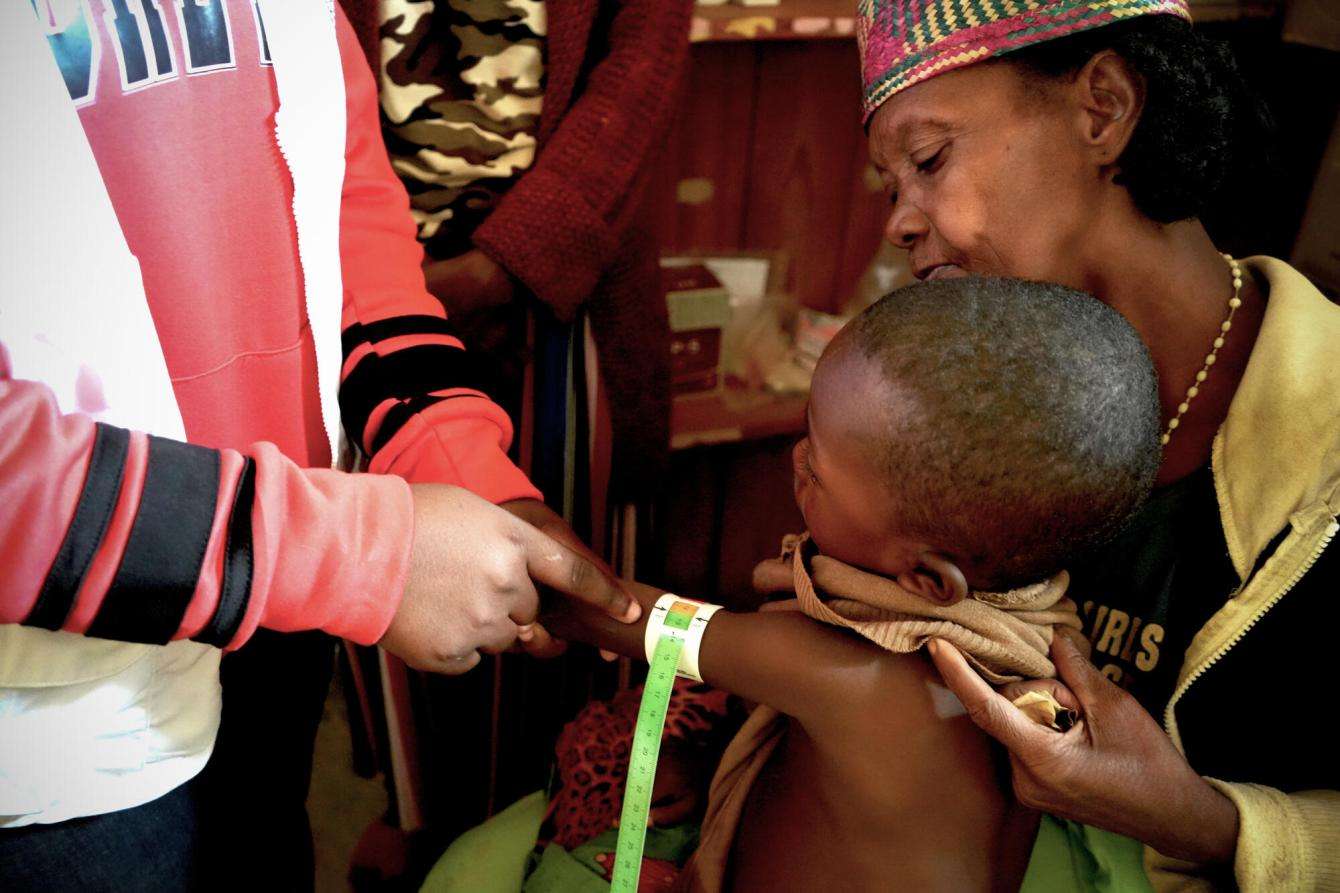
Our work in Ikongo
MSF has been present in Ikongo since 2022. Between then and March 2024, MSF medical teams collaborating with Madagascar health authorities and health promoters diagnosed and treated 2,205 children suffering from both malnutrition and malaria, including 256 cases this year. In response to food insecurity exacerbated by climate-related weather events such as cyclones, MSF teams have increased activities in the southern part of Madagascar, which has been the most affected. Currently, MSF is supporting seven primary health centers and two intensive nutritional clinics to diagnose and treat malnourished children in Ikongo district.
